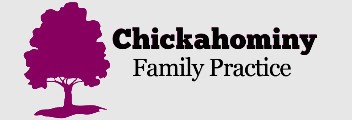Much has been made in recent months and years about the epidemic of obesity in this country. According to the most current statistics, 127 million adults in America are considered overweight, 60 million adults are considered obese (Body Mass Index, or BMI >30), and 9 million are extremely obese (BMI > 40). That is news that is hardly new to most Americans these days. In fact, it is hard to turn on the news or open the newspaper without hearing facts about how our country is in trouble. Our children are overweight, nobody is getting the proper amount of exercise, and our hectic schedules make eating fast food the only viable option. Yikes!
But all of this begs the question: What can we do to help change things? If a change in our country can begin with one vote, why can’t the obesity epidemic change with one person (then another, then another) making wise and informed food choices? The key is education-and knowing what we eat. .. and what it is helping us to become.
Here are just a few foods to be aware of when you sit down to eat.
1. Fructose or High fructose corn syrup
Fructose is a simple sugar or carbohydrate, that is found in many foods we eat. It is found naturally in some foods we eat and is also used as a sweetener in many foods as well. Estimates are that about 10% of our modern diet comes from fructose. Fructose in our diet comes from three main sources: sucrose, or common table sugar, high fructose corn syrup (HFCS), and fruit. Though the fruit does contain fructose in conjunction with many other vitamins, the amount of fructose found in fruit is relatively very small compared to the amount of fructose found in many other foods. Consuming fructose in small amounts is not a bad thing. However, consuming too much fructose is when our body begins to have trouble processing it. When the body is overwhelmed it begins processing fructose into glucose (which raise your blood sugar and
HgbA 1 C), and triglycerides (which help to raise your cholesterol) putting you at risk for developing diabetes and heart disease.
Fructose disguises as many things on food labels. Here are some names to watch for that really all mean one thing: FRUCTOSE or SUGAR!
Corn sweetener, corn syrup, dextrose, fruit juice concentrate, lactose, maltodextrin, malt syrup, sucrose, xylose, high fructose corn syrup
Beware of fructose or high fructose corn syrup in the following foods:
Most sodas, many artificially sweetened fruit juices, many breads (even those that state on the package that they are whole wheat), many breakfast cereals, many jams, jellies, syrups, and certain types of ice cream
2. Trans fats
Trans fats are a special type of synthetically produced fats made when manufacturers add hydrogen to vegetable oil. The problem with trans fats is that since they are synthetically produced, the body cannot use them in the constructive ways-the body simply stores them. Trans fats, like saturated fats, raise LDL cholesterol levels in the blood and put you at increased risk for heart disease.
Cakes, cookies, crackers, pies, bread, margarine (a big culprit! Hint: look for soft-tub margarine-it is less likely to have trans fat), fried potatoes, potato chips, corn chips, popcorn, shortening, salad dressing, some breakfast cereals, candy
3. Hidden sodium
So you might be saying: I know to watch the amount of fat and sugar I eat. But remember eating foods high in sodium or salt can also be a culprit that is helping undo your diet by raising your blood pressure. And don’t be fooled into thinking that the only source of sodium in your salt shaker. Sodium is found in many foods that many of us eat every day. In fact, 75% of the sodium that we consume is in processed foods not salt that we add to our food.
In fact, according to abcnews.com, clinical nutritionist Samantha Heller when she appeared on “Good Morning America,” “The grande Starbucks java chip Frappuccino® light blended coffee has 350 mg of sodium, and one Krispy Kreme chocolate iced cake doughnut has 320 mg. That is about 15% of your daily allowance.” Keep in mind that it doesn’t have to taste salty to contain sodium! Any food with more than 480 mg of sodium should be considered a high-salt food.
Beware of sodium or salt disguises on food labels: Baking soda, baking powder, MSG, disodium phosphate
Beware of hidden sodium in the following foods: Canned soup, canned meat, smoked foods, salted nuts, frozen dinners, salad dressings, pretzels, potato chips, cheese, soy sauce, and steak sauce.
The key to proper nutrition and in turn curbing obesity, lowering blood sugar, cholesterol, and blood pressure, and finally preventing diabetes and heart disease, is in knowing what it is we are actually putting into our bodies. Diet and Nutrition: You Are What You Eat! So read food labels – understanding what they say is extremely important. By being aware of our diet, we actually can become what we eat and be proud.
Sources:
1. Obesity in America
2. Fructose- How worried should we be? From Medscape Journal of Medicine 7/9/08; George Bray, MD
3. Sugar’s Many Disguises: Recognizing Sugar on Food labels, Laura Dolson; About.com
4. www.fda.gov
Brittany Rowan, PA-S
Pacific University
School of PA Studies
November 4, 2008
Brittany Rowan, PAS was a Physician Assistant student from Pacific University PA Program in Oregon. She was with us at Kentwood Square on rotation for her training from August to November 20






